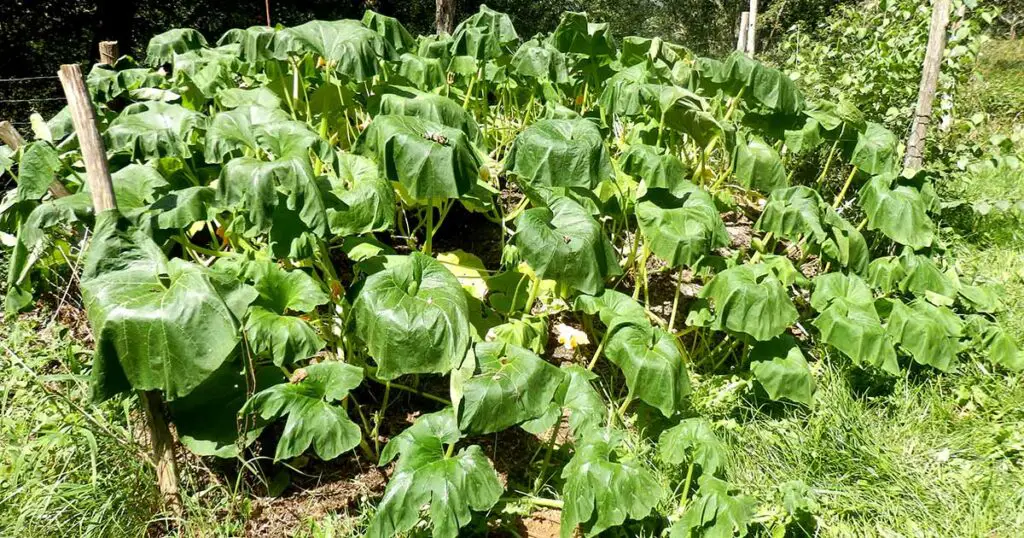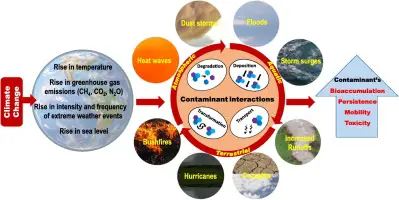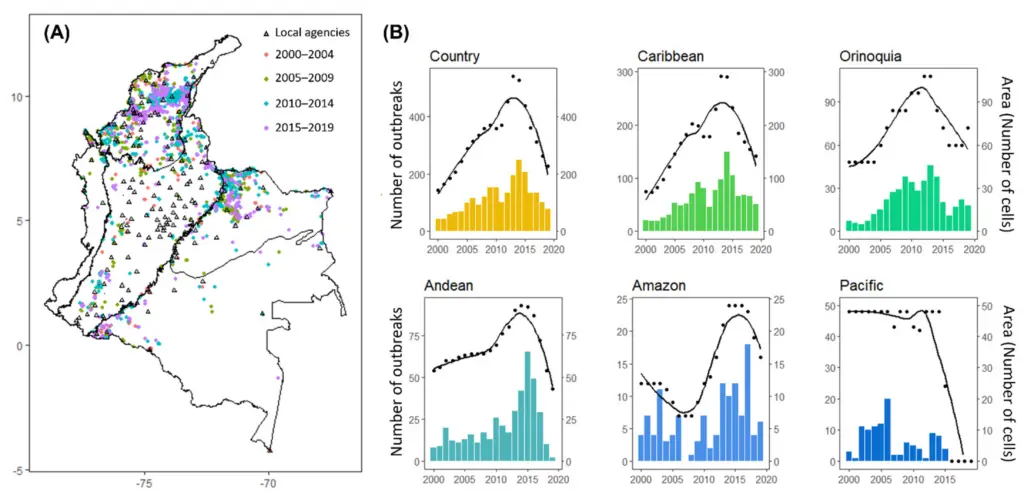Pumpkin plant leaves turning yellow is typically caused by nutrient deficiencies, pests, or disease. Pumpkin plants may experience yellowing leaves due to various factors such as nutrient deficiencies, pests, or diseases.
Nutrient deficiencies, particularly in nitrogen, can lead to yellowing foliage. This can be addressed by applying a balanced fertilizer. Pests like aphids, cucumber beetles, or spider mites can also cause yellowing leaves by feeding on the plant. Regularly monitoring and applying appropriate pesticides or insecticidal soaps can help control these pests.
Lastly, diseases such as powdery mildew or bacterial wilt can cause yellowing and wilting of leaves. Proper plant hygiene, adequate airflow, and fungicides can help prevent and manage these diseases. Regular inspection and prompt action are essential in maintaining the health and productivity of pumpkin plants.

Common Causes Of Yellowing Pumpkin Leaves
Yellowing pumpkin leaves can be a sign of various issues like nutrient deficiencies, fungal infections, or pests. Proper diagnosis and timely treatment can help restore the health of the pumpkin plant.
Yellowing pumpkin leaves can be a cause for conceindicatedeners. The discoloration may indicate underlying issues that need immediate attention. Understanding the common causes of yellowing pumpkin leaves is essential to address the problem effectively. Here are some possible reasons for this phenomenon:
Lack Of Nutrients
- Insufficient nitrogen: Nitrogen deficiency can cause the leaves to turn yellow. This essential nutrient is crucial for the growth and development of the plant. A lack of nitrogen may result in stunted growth and yellowing leaves.
- Phosphorus deficiency: Inadequate phosphorus can also lead to yellowing pumpkin leaves. Phosphorus plays a vital role in energy transfer and root development. The plant’s overall health and leaf color may suffer without enough phosphorus.
Overwatering Or Underwatering
- Overwatering: Pumpkins require well-draining soil, and overwatering can lead to yellowing leaves. Excessive water can cause root rot, depriving the plant of necessary nutrients and oxygen.
- Underwatering: On the other hand, insufficient watering can also result in yellowing pumpkin leaves. Inadequate water supply hampers the plant’s ability to uptake nutrients, leading to leaf discoloration.
Pest Infestation
- Aphids: These tiny insects can infest pumpkin plants and cause yellowing leaves. Aphids feed on the sap of the leaves, draining essential nutrients and fluids from the plant.
- Spider mites: Spider mites are another common pest that can cause yellowing of pumpkin leaves. They create tiny webs and suck the sap, leading to weakened plants and yellowing foliage.
Identifying the specific cause of yellowing pumpkin leaves is crucial to implementing the appropriate solution. Careful observation, timely intervention, and appropriate treatment measures can help restore the health of your pumpkin plant.
Assessing The Health Of Your Pumpkin Plant
Assessing the health of your pumpkin plant involves understanding why the leaves are turning yellow. Identifying potential issues such as nutrient deficiencies, pests, or overwatering can help you address and resolve the problem effectively.
Pumpkin Plant Leaves Turning Yellow
When keeping your pumpkin plant healthy and thriving, it’s important to regularly assess its overall health and well-being. By closely examining various factors, you can determine the cause behind your pumpkin plant’s yellowing leaves and take appropriate measures to address the issue.
Herto assess the overall health and well-being regularly health of your pumpkin plant:
Checking For Signs Of Disease
- Examine the leaves for any visible signs of diseases, such as powdery or downy mildew. Look for fuzzy white or gray patches on the leaves.
- Check for any presence of pests, such as aphids or spider mites, which can cause leaf discoloration and wilting.
- Inspect the stem and fruit for any signs of rot or fungal infections. These can contribute to the yellowing of leaves.
- Take note of any spots or lesions on the plant’s foliage, which might indicate a fungal or bacterial infection.
Examining The Surrounding Environment
- Assess the amount of sunlight the pumpkin plant is receiving. Insufficient sunlight can lead to chlorosis, resulting in yellowing leaves.
- Observe the moisture levels in the soil. Overwatering or underwatering can both cause stress and contribute to leaf discoloration.
- Check the drainage of the soil. Poor drainage can lead to waterlogging, negatively impacting the plant’s health.
- Take note of the temperature and humidity in the growing area. Extreme variations can stress the plant and cause leaf yellowing.
Evaluating Growth And Development
- Analyze the overall growth and development of the plant. A lack of proper nutrients or imbalanced fertilizer application can result in yellowing leaves.
- Monitor the growth rate and size of the fruits. If the pumpkins are not reaching their full potential, it may indicate a nutrient deficiency.
- Consider any recent changes or disruptions in the plant’s environment, such as transplanting or chemical exposure. These factors can contribute to leaf yellowing.
By carefully examining these factors, you can gain valuable insights into the health of your pumpkin plant and identify potential causes behind the yellowing leaves. Addressing the underlying issues promptly will help ensure your plant’s continued growth and vitality.
To support a healthy pumpkin plant, remember to provide the necessary care, including proper watering, sunlight exposure, and nutrient management.
Addressing Nutrient Deficiencies
Pumpkin plant leaves turning yellow may indicate nutrient deficiencies. Ensure proper fertilization and consider adding organic matter to improve soil health.
If your pumpkin plant leaves turn yellow, it could be a sign of nutrient deficiencies. Addressing these deficiencies is crucial to ensure healthy growth and yield. Here are some key steps to take:
Choosing The Right Fertilizer
Selecting the appropriate fertilizer is vital in rectifying nutrient deficiencies in pumpkin plants. Consider the following factors when making your choice:
- Nitrogen-based fertilizers: Opt for a fertilizer with a higher nitrogen content to address yellowing leaves, as nitrogen supports leaf growth.
- Phosphorus-rich fertilizers: If you observe stunting or slower growth alongside yellowing leaves, opt for a fertilizer with higher phosphorus levels, which promotes root development and overall plant health.
- Potassium-enriched fertilizers: To prevent yellowing caused by potassium deficiencies, choose a fertilizer that provides ample potassium, fostering strong stems and disease resistance.
Applying Fertilizer Correctly
Once you’ve chosen the appropriate fertilizer, it’s essential to apply it correctly to alleviate nutrient deficiencies effectively. Follow these guidelines:
- Timing: Apply fertilizer when the pumpkin plants are actively growing, but avoid doing so during periods of stress such as extreme heat or drought.
- Distribution: Spread the fertilizer evenly around the base of the plant, keeping it a few inches away from the stem to prevent burning.
- Dosage: Follow the specific instructions on the fertilizer packaging to determine the correct dosage. Over-fertilizing can cause more harm than good.
Monitoring And Adjusting Nutrient Levels
Regularly monitoring the nutrient levels is necessary to identify and address deficiencies promptly. Consider the following steps:
- Soil testing: Conduct soil tests to determine your pumpkin patch’s nutrient levels and ph balance. This information will help you choose the appropriate fertilizers and adjust nutrient levels accordingly.
- Visual inspection: Continuously observe the foliage for signs of yellowing, as this could indicate imbalances or deficiencies.
- Leaf tissue analysis: For a more accurate assessment, consider sending a sample of the affected leaves for analysis. A leaf tissue analysis can provide valuable insights into specific nutrient deficiencies.
By choosing the right fertilizer, applying it correctly, and monitoring and adjusting nutrient levels, you can address deficiencies that may be causing your pumpkin plant leaves to turn yellow. Taking these steps will promote healthy plant growth and optimize your pumpkin harvest.
Adjusting Watering Practices
Adjusting watering practices can help prevent pumpkin plant leaves from turning yellow. By ensuring that the plants receive adequate moisture without overwatering, you can maintain the health and vigor of your pumpkin plants.
Are the leaves on your pumpkin plant turning yellow? This can be a cause for concern as it may signal issues with watering. Understanding how to adjust your watering practices can help you revive your plants and prevent further yellowing of the leaves.
Determining Optimal Watering Schedule
To ensure the health of your pumpkin plants, it is crucial to determine the optimal watering schedule. Consider the following points:
- Evaluate the weather conditions: Factors such as temperature, humidity, and rainfall can affect the watering needs of your pumpkin plant. Adjust the watering schedule accordingly.
- Observe the soil moisture: Check if the soil feels dry before watering your plants. Ensure that the top layer of soil is slightly moist but not overly saturated.
- Consider the plant’s growth stage: Young pumpkin plants require more frequent watering than mature ones. Adjust the watering frequency as the plant grows.
- Pay attention to rainfall: If your area receives ample rainfall, you may need to reduce the frequency of manual wat
- ering. Take into account the natural moisture provided by rain.
Proper Drainage And Air Circulation
Another essential aspect to consider when adjusting watering practices is maintaining proper drainage and air circulation around the pumpkin plant. Here’s what you should keep in mind:
- Choose well-draining soil: Opt for soil that allows excess water to drain away easily. This prevents waterlogging, which can contribute to yellowing leaves.
- Provide adequate spacing: Ensure your pumpkin plants have enough space between them to promote proper air circulation. This helps prevent the growth of fungi and molds that thrive in damp environments.
- Use mulch wisely: Mulching around the base of the plants can help retain moisture in the soil. However, be cautious not to over-mulch, as this can lead to excessive moisture and hinder air circulation.
Monitoring The Soil Moisture Levels
Efficiently monitoring the soil moisture levels is crucial in preventing the yellowing of pumpkin plant leaves. Consider the following tips:
- Use a moisture meter or your hands: Regularly check the soil’s moisture levels around your pumpkin plants. You can use a moisture meter or simply rely on your hands to gauge the soil’s moisture content.
- Water deeply, but not excessively: Ensure that the water penetrates deep into the soil. However, avoid overwatering, which can lead to waterlogged conditions.
- Establish a watering routine: Set a consistent watering schedule based on the moisture levels in the soil. Adjust the frequency and amount of water accordingly.
By adjusting your watering practices and paying attention to the specific needs of your pumpkin plants, you can prevent yellowing leaves and promote healthy growth. Remember to determine the optimal watering schedule, maintain proper drainage and air circulation, and regularly monitor soil moisture levels.
With these adjustments in place, your pumpkin plants will thrive and produce vibrant, green leaves.
Dealing With Pests And Diseases
Pumpkin plant leaves turning yellow could be a sign of pests or diseases. It is important to identify the problem early and take appropriate action, such as using organic pest control methods or treating the plants with fungicides, to prevent further damage to the crop.
Pumpkin Plant Leaves Turning Yellow
Has your once-thriving pumpkin plant suddenly started to show signs of yellowing leaves? Don’t panic! This common issue can often be attributed to various pests and diseases affecting pumpkin plants. Identifying the cause of the problem is crucial in order to take the appropriate action to save your plants.
In this section, we will discuss the most common pumpkin plant pests and diseases and provide tips on how to deal with them using organic methods.
Identifying Common Pumpkin Plant Pests:
- Aphids: These tiny insects feed on the sap of pumpkin plants, causing leaves to yellow and curl. Look for clusters of small, pear-shaped bugs on the undersides of leaves.
- Squash bugs: Easily recognized by their brown or gray bodies, squash bugs suck the sap from leaves, leading to discoloration and wilting.
- Cucumber beetles: These pests eat pumpkin leaves and spread bacterial wilt, resulting in yellowing and wilting foliage.
- Spider mites: Barely visible to the naked eye, these pests leave behind fine webbing on leaves and suck plant sap, causing yellowing and speckled leaves.
Implementing Organic Pest Control Methods:
- Introduce beneficial insects: Encouraging natural predators like ladybugs and lacewings can help control aphids and other pest populations.
- Use organic insecticides: Spraying neem oil or insecticidal soap on affected plants can deter pests without harming the environment.
- Handpick pests: Removing squash bugs and cucumber beetles by hand can prevent further damage to pumpkin plants.
- Crop rotation: By rotating where you plant pumpkins yearly, you can disrupt pest life cycles and decrease their impact.
Preventing And Managing Common Pumpkin Diseases:
- Powdery mildew: This fungal disease appears as a powdery white coating on pumpkin leaves, causing them to turn yellow and wither. Increase airflow and avoid overhead watering to prevent its spread.
- Downy mildew: Similar to powdery mildew, downy mildew causes yellow patches on leaves. Remove and destroy infected plants to prevent the disease from spreading.
- Fusarium wilt: This soil-borne fungal disease causes yellowing and wilting of leaves, typically starting with the older ones. Practicing crop rotation and using disease-resistant pumpkin varieties can help prevent its onset.
- Bacterial wilt: Spread by cucumber beetles, this disease results in sudden wilting, yellowing, and eventual death of leaves. Promptly remove and destroy infected plants to prevent bacterial wilt from spreading.
By closely observing your pumpkin plants and promptly addressing any pest or disease issues, you can ensure the health and vitality of your harvest. Remember, organic pest control methods and preventive measures go a long way in safeguarding your plants and maximizing their yield.
Stay vigilant, take action, and watch your pumpkin patch thrive!
Preventing Yellow Leaves In The Future
To prevent yellow leaves in the future, it is crucial to address the issue of pumpkin plant leaves turning yellow. Proper watering, balanced fertilization, adequate sunlight, and careful pest control are essential for maintaining healthy green leaves on pumpkin plants.
Regular monitoring and early intervention can help prevent yellowing and promote plant health.
Regular Plant Maintenance:
- Ensuring the overall health and vitality of your pumpkin plants is crucial in preventing the occurrence of yellow leaves. Follow these maintenance tips to keep your plants thriving:
- Proper watering: Maintain consistent soil moisture levels, avoiding overwatering and underwatering. This will help prevent plant stress, which can lead to yellowing of the leaves.
- Weed control: Regularly remove weeds from the pumpkin patch as they compete for nutrients and moisture, which can result in nutrient deficiencies and leaf discoloration.
- Pruning: Regularly inspect your plants for any damaged or diseased leaves and promptly remove them to prevent the spread of diseases and to maintain good air circulation around the plant.
- Fertilization: Feed your pumpkin plants with a balanced organic fertilizer according to the package instructions. Providing the necessary nutrients will help keep the foliage healthy and vibrant.

Regular Soil Testing And Analysis:
- Regular soil testing and analysis is essential in identifying any deficiencies or imbalances that may be causing the yellowing of pumpkin plant leaves. Follow these steps for accurate soil testing:
- Collect soil samples: Gather samples from different areas of your pumpkin patch, avoiding potential contamination from compost or organic matter. Combine the samples in a clean container.
- Send to a reputable lab: Research and select a reliable soil testing lab in your area and follow their guidelines for sample submission. Usually, you’ll need to fill out a form and mail the samples to the lab.
- Analyze the results: Once you receive the analysis report, study it carefully to understand the nutrient levels and ph of your soil. Look for any deficiencies or imbalances that could be affecting the health of your plants.
- Take corrective measures: Based on the analysis report, adjust the soil ph and apply the necessary nutrients to correct any deficiencies or imbalances. Consult with a gardening expert or extension service if you require assistance in interpreting the results or determining the appropriate amendments.
Consistent Monitoring And Observation:
- Regular monitoring and observation of your pumpkin plants will help detect early signs of stress or issues that could lead to the yellowing of the leaves. Here are some monitoring techniques to employ:
- Check for pests: Regularly inspect the leaves, stems, and undersides for any signs of pest infestation, such as aphids or spider mites. Act promptly to prevent pests from causing damage and stress to the plants.
- Look for diseases: Keep an eye out for common pumpkin diseases, such as powdery mildew or bacterial wilt. Promptly identify and treat any signs of disease to prevent yellowing and deterioration of the leaves.
- Assess nutrient levels: Monitor the growth and overall appearance of the pumpkin plants. If you notice stunted growth or pale leaves, it could indicate a nutrient deficiency that needs addressing.
- Monitor environmental conditions: Be aware of any extreme weather conditions, such as excessive heat or heavy rainfall, which can impact the health of your plants. Take appropriate measures to protect them, such as providing shade or improving drainage if necessary.
Remember, by practicing regular plant maintenance, conducting soil testing, and consistently monitoring your pumpkin plants, you can prevent yellow leaves and ensure their overall health and productivity. Providing optimal care will yield vibrant foliage and maximize your chances of a bountiful pumpkin harvest.
Frequently Asked Questions
Why Are My Pumpkin Plant Leaves Turning Yellow?
Various factors, including nutrient deficiencies, overwatering, pests, or diseases can cause yellowing leaves on pumpkin plants. Check the soil pH and nutrient levels, adjust watering accordingly, and inspect for signs of pests or diseases. Taking appropriate action will help restore the health of your pumpkin plant.
How Can I Prevent My Pumpkin Plant Leaves From Turning Yellow?
To prevent yellowing of pumpkin plant leaves, ensure proper nutrient balance by fertilizing regularly, maintain adequate watering but avoid overwatering, and practice good garden hygiene by removing any diseased or infested leaves. Regularly inspecting the plant for signs of pests or diseases can help catch any issues early on.
Should I Remove Yellow Leaves From My Pumpkin Plant?
If your pumpkin plant has yellow leaves, it is advisable to remove them. Yellow leaves are often a sign of nutrient deficiencies or other issues. Removing these leaves helps redirect the plant’s energy towards healthier leaves and can prevent the spread of diseases or pests.
Be sure to dispose of the removed leaves properly.
Conclusion
To wrap up, the yellowing of pumpkin plant leaves is a common issue that can be caused by various factors. By examining the symptoms and implementing the appropriate solutions, gardeners can effectively resolve this problem and ensure the health and productivity of their pumpkin plants.
Maintaining proper watering practices, providing adequate sunlight, and paying attention to the soil’s nutrients is essential to prevent yellowing leaves. Regularly inspecting the plants for pests or diseases and promptly treating them will also contribute to their overall well-being.
Remember, prevention is key – taking preemptive measures such as rotating crops and practicing good garden hygiene can help minimize the risk of leaf discoloration. By following these guidelines, both beginner and experienced gardeners can enjoy thriving pumpkin plants and a bountiful harvest.




 Dr Ahsanur Rahman, PHD
Dr Ahsanur Rahman, PHD



